Ecuador’s criminal network: the prison mafias
Organized crime in Ecuador today operates on several levels.
At the upper echelons are the drug traffickers who control Ecuador’s transnational cocaine trafficking business, and corrupt elites in politics, business, and within state institutions. At the bottom rung are gangs of disaffected youths and common criminals, who operate both on the country’s streets and in its prisons. The most powerful groups within the prison system, known in Ecuador as the “mafias,” stand at the intersection between these levels, connecting and coordinating between them, reported by insightcrime.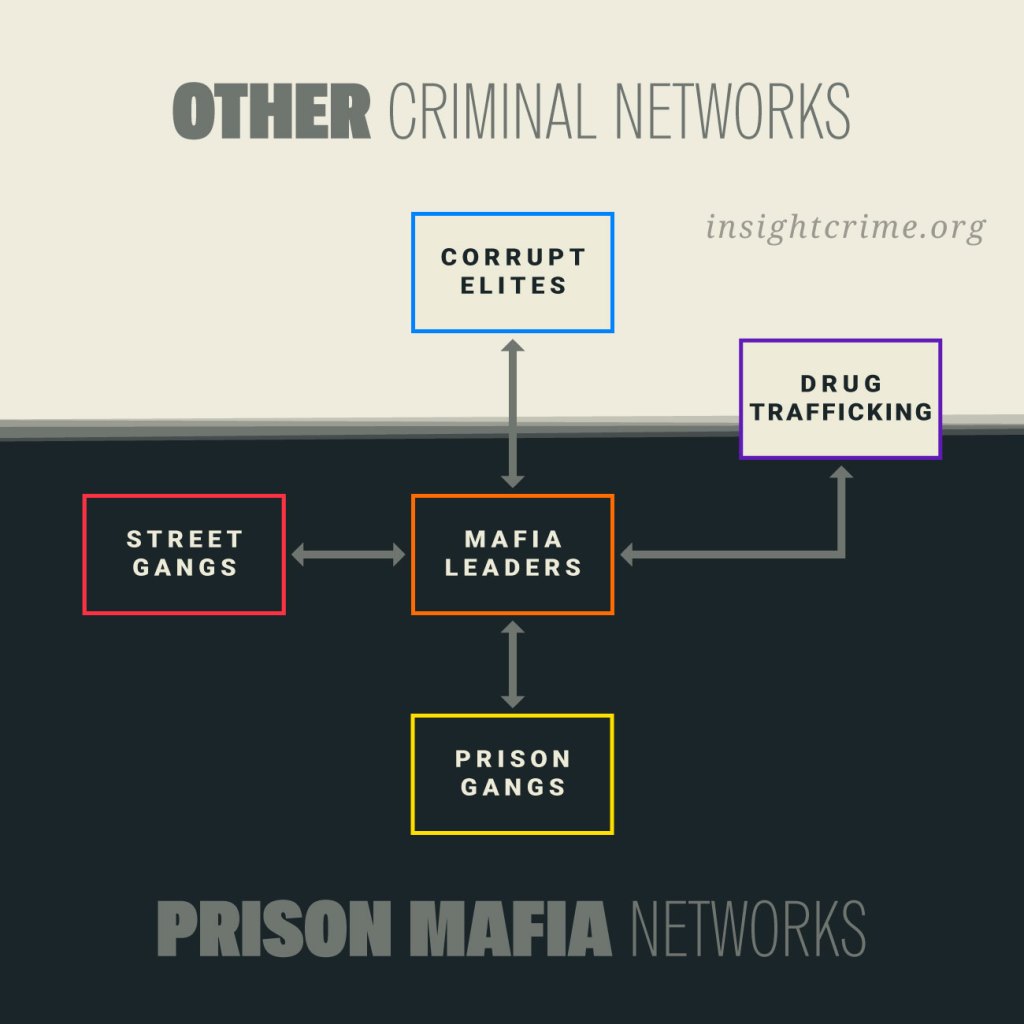
Corrupt Elites
The prison mafias and criminal elites such as drug traffickers and top-level money launders maintain sweeping corruption networks that are most evident in law enforcement and the judicial sector, but also include political and administrative branches of state and the private sector. The main role of corrupt security officials is to provide intelligence to facilitate and protect the mafias’ activities. Judicial officials provide favorable rulings on issues such as prosecutions and sentencing, the granting of early releases, and prison transfers. Politicians and government officials protect and facilitate mafia activities, as well as grant access to sources of income such as public contracts and key positions within local governments. In exchange, mafias may contribute campaign financing, deliver votes, or simply pay bribes. However, criminal, security forces, intelligence, and high-ranking former government sources all insist that the ties between the mafias and corrupt actors extend much higher, and deeper. At the upper levels of political power, those sources say, the power dynamic switches: The mafias act at the service of the corruption networks. These top-level corruption networks are involved in a dizzying array of legal and illegal businesses, above all, capturing rents and embezzling funds from the state.
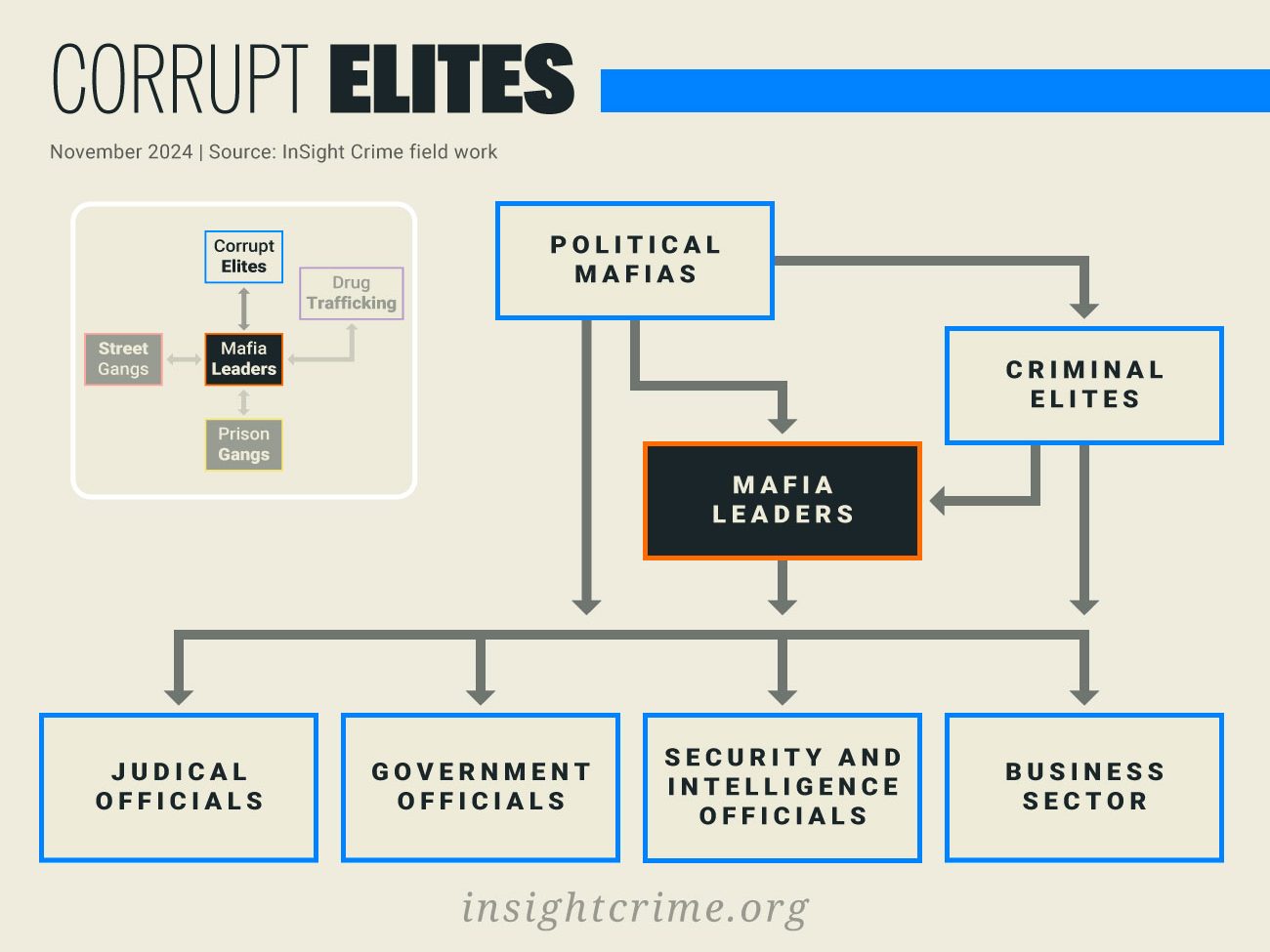
Drug Trafficking
Transnational drug traffickers source cocaine from Colombian suppliers, then either work with Ecuadorian traffickers to move shipments through the country or directly coordinate operations with the prison mafias. Most of these international traffickers are European, with Albanian traffickers particularly prominent, or from the Mexican drug trafficking organizations the Sinaloa Cartel and the Jalisco Cartel New Generation (Cartel de Jalisco Nueva Generación – CJNG) The complex logistical work of drug trafficking is carried out by dedicated cells acting on the orders of the upper levels of the mafia leadership. These cells specialize in different routes and methods, such as contaminating container shipping or dispatching go-fast boats or light aircraft. The mafias also use their street gang networks to store and transport drug shipments, and to hold, take, and monitor strategic trafficking territories, such as riverside or coastal communities or areas close to shipping ports.
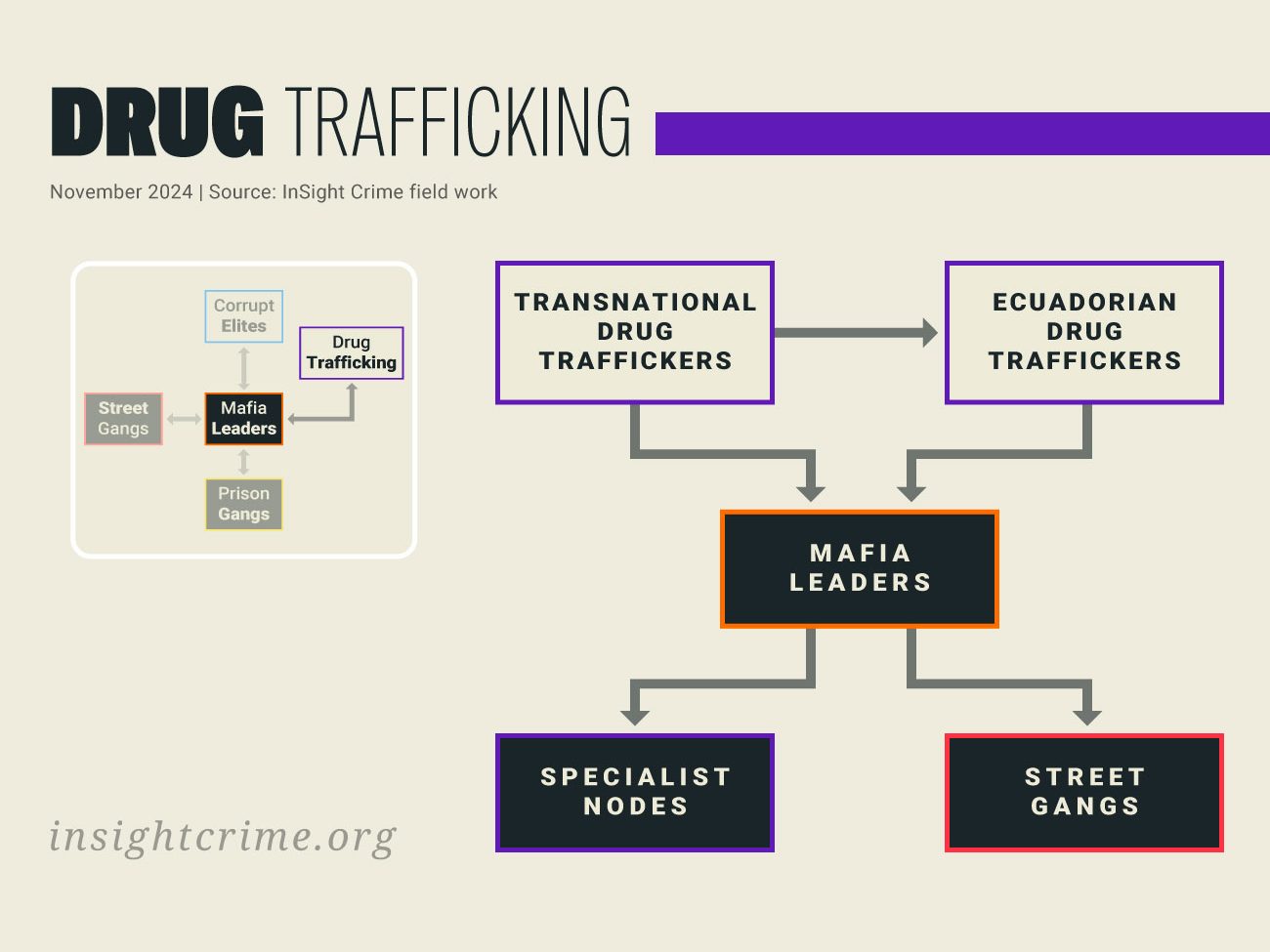
Street Gangs
Beneath the top mafia leaders are senior commanders who run the operational side of the network. Each of these commanders, known as the jefes de zona, or zone commanders, is responsible for certain regions, where they supply gangs with arms and drugs to distribute. Below the jefes de zona are the gang leaders known as jefes de barrio, or neighborhood bosses. They are responsible for carrying out the orders of the higher-level leaders, running day-to-day criminal operations, and maintaining social control in their territory. To do this, they run networks of street level gangs known as combos, which act as the mafia’s labor force. The combos’ size varies according to the mafia and local dynamics, but it generally consists of small groups of youths. While their presence is key to holding territory, their activities are usually limited to the lowest level of operations, principally moving or guarding drugs, money or weapons, running street-level criminal economies such as extortion, robberies, and microtrafficking, and carrying out acts of violence, including assassinations.
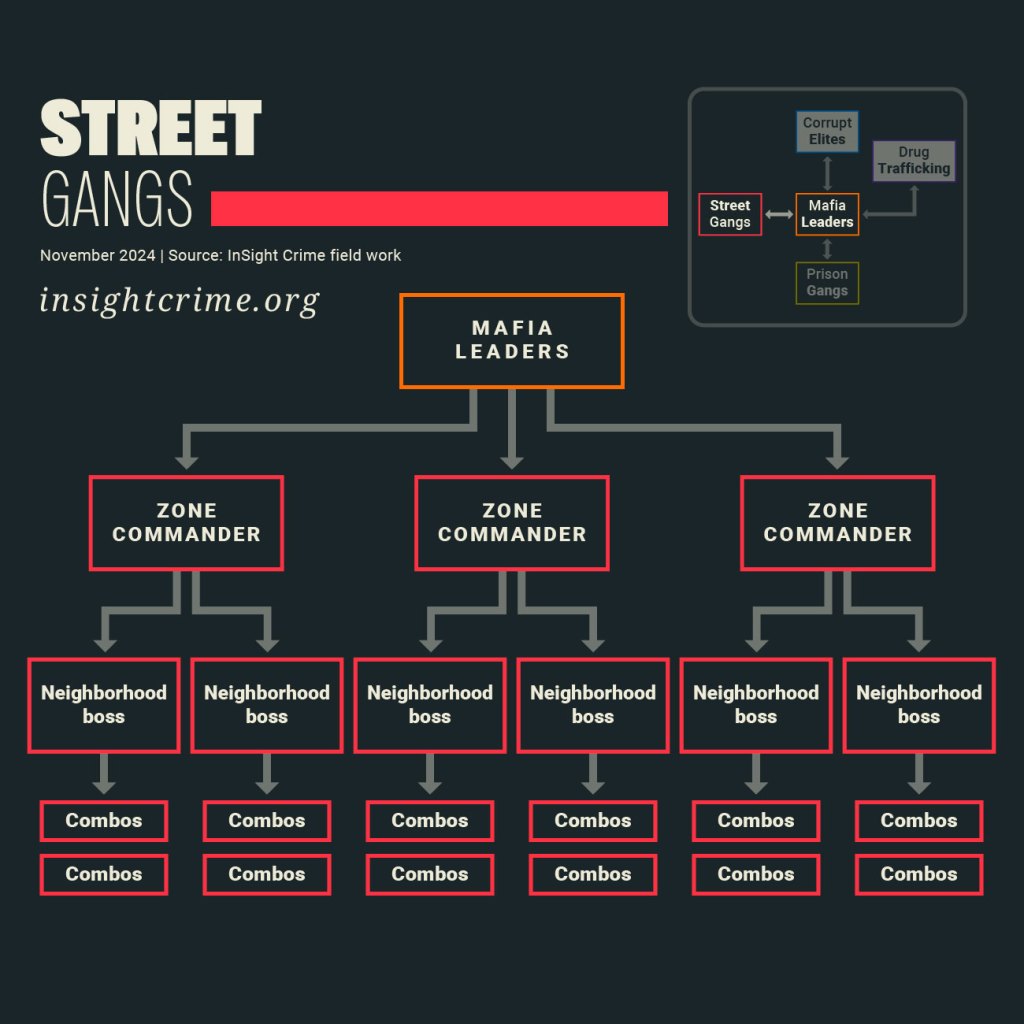
Prison Gangs
Many of the mafia leaders and their top lieutenants are in the prisons, where they manage internal networks as well as coordinate activities on the outside. Beneath the top leaders are senior lieutenants, known as comandantes de pabellón, who run the prison wings or sometimes an entire prison. These commanders often have dual roles, also operating as zone commmanders for the street gang networks on the outside. Below them are the jefes de aula, or cell block bosses. These leaders manage rank and file members and members with specialist roles. Among the specialists are líneas, or lines, who manage drug distribution networks, contraband smuggling, or other illegal businesses; llaveros, or key masters, who control access to the cell blocks; caleteros, or storage managers, who manage hidden stashes of weapons, drugs, and other contraband; and come-muertos, or death-eaters, alias known as killers, who are the hitmen.
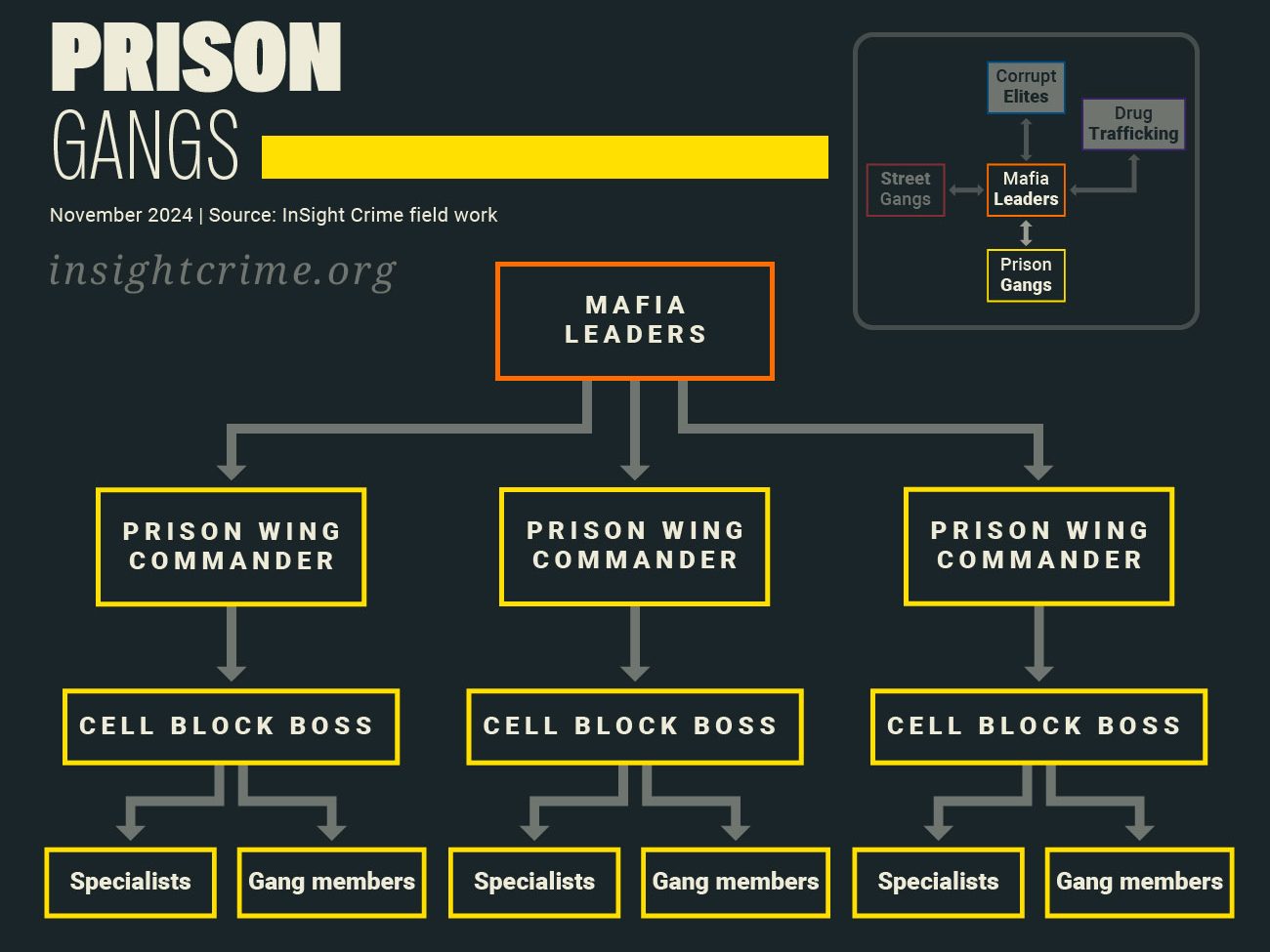
Read more similar news:
Comments:
comments powered by Disqus


































